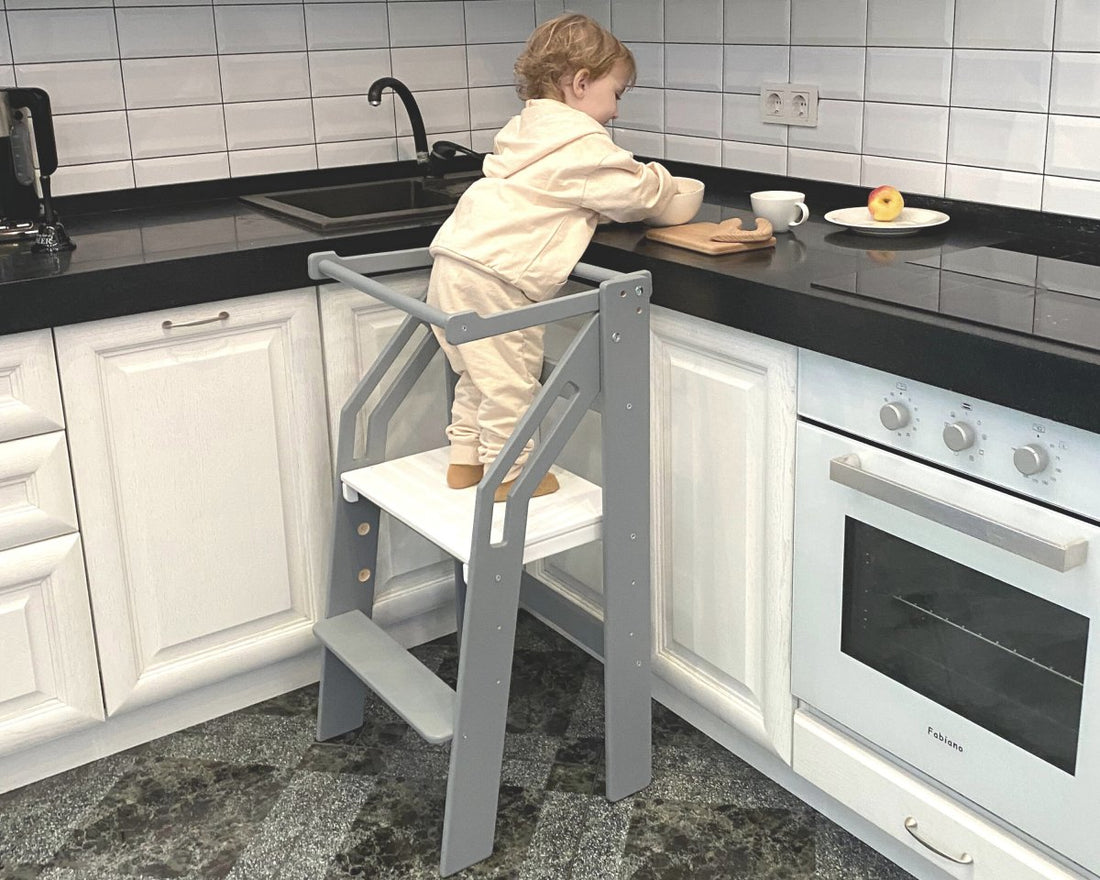
The Ultimate Guide to Play Kitchens for Kids: Why They’re Essential for Child Development
Share
Children love to imitate adults, and one of the most common ways they do this is through pretend play. A play kitchen is a fantastic tool for fostering creativity, encouraging social skills, and aiding in overall cognitive development. In this article, we’ll explore why a play kitchen is one of the best gifts for a child, how to choose the right one, and some ideas for making the most of this imaginative toy.
**Why Play Kitchens Are Beneficial for Kids**
1. **Encourages Imaginative Play**
A play kitchen allows children to dive into the world of make-believe, transforming into chefs, restaurant owners, or even parents preparing meals for their little "family." Imaginative play is critical for developing creativity and problem-solving skills. Kids learn to invent scenarios, come up with solutions, and role-play different characters, which enhances their ability to think outside the box.
2. **Develops Social Skills**
When kids engage in play kitchen activities with others, it encourages cooperation, sharing, and communication. Whether it's playing with siblings, friends, or parents, they practice taking turns, negotiating roles, and working together to "prepare" meals. This interaction fosters social and emotional development, which is important for building relationships.
3. **Improves Fine Motor Skills**
Play kitchens come with many accessories, such as pots, pans, utensils, and pretend food. Handling these items requires fine motor control, as kids grasp small objects, pour pretend liquids, and stir with spoons. Over time, this play helps to strengthen their dexterity and hand-eye coordination, skills that will benefit them in real-world activities.
4. **Encourages Healthy Eating Habits**
Through a play kitchen, you can subtly introduce your child to the concept of healthy eating. Use toy fruits, vegetables, and other healthy items to create pretend meals together, explaining the importance of nutrition. This playful introduction to healthy habits can shape their attitudes towards food and nutrition as they grow older.
5. **Boosts Independence and Confidence**
A play kitchen gives kids a sense of ownership over their environment. As they "cook" and serve their meals, they feel a sense of accomplishment. It’s a perfect way to encourage independence, allowing them to make decisions and carry out tasks on their own.
How to Choose the Right Play Kitchen
When shopping for a play kitchen, there are several factors to keep in mind to ensure you choose one that’s perfect for your child:
1. **Size**
Play kitchens come in various sizes, from compact models that fit in small apartments to larger, more elaborate setups. Consider the available space in your home. If you have limited room, a smaller kitchen that’s easy to store might be a better option. On the other hand, if space isn’t an issue, a bigger set with more features can provide a more immersive experience.
2. **Materials**
Wooden play kitchens tend to be more durable and eco-friendly, making them a long-lasting option. They also often have a more classic, aesthetic appeal. However, plastic play kitchens are lightweight, easy to clean, and often more affordable. Choose based on your preference for durability versus ease of maintenance.
3. **Features**
Some play kitchens come with working parts, like battery-operated lights, sounds, and even running water features (pumps for water play). Others are more basic but come with plenty of storage for accessories. Decide whether you want a more interactive kitchen with special features or a simpler, more traditional design.
4. **Accessories**
Many play kitchens come with accessories like pots, pans, utensils, and pretend food. If the kitchen set you’re eyeing doesn’t include these, you’ll need to purchase them separately. Keep in mind that these additional items enhance the play experience, so it's worth investing in a well-stocked set of accessories.
5. **Age Appropriateness**
Ensure the play kitchen is appropriate for your child’s age. For toddlers, simpler, sturdier kitchens with fewer small parts are ideal. Older kids, however, might enjoy more detailed kitchens with interactive features and more accessories.
**Top Play Kitchen Brands to Consider**
1. **KidKraft**
KidKraft is one of the most popular brands for play kitchens. Their designs are often wooden, durable, and feature a variety of interactive elements. They offer everything from simple, compact sets to larger, more detailed kitchens.
2. **Melissa & Doug**
Known for their high-quality wooden toys, Melissa & Doug also have a range of play kitchens. Their sets are beautifully designed, emphasizing quality and durability.
3. **IKEA**
IKEA’s DUKTIG play kitchen is a minimalist, affordable option made from durable wood. It’s perfect for parents who want something simple yet functional, and it can be easily customized with paint or additional features.
4. **Step2**
Step2 specializes in plastic play kitchens that are lightweight, durable, and affordable. Their products often include battery-operated lights and sounds, providing an extra layer of interactivity for kids.
Fun Ideas to Enhance Play Kitchen Time
To maximize the benefits of your child’s play kitchen, consider incorporating some of these fun activities:
-
Themed Dinners Choose a theme for the day, such as "Italian Night" or "Breakfast Feast," and let your child "cook" meals that fit the theme. It adds an educational element by introducing them to different cuisines and ingredients.
-
Restaurant Role Play Set up a pretend restaurant where your child can be the chef or waiter, and you or their siblings can be the customers. It’s a great way to practice communication, hospitality, and social interaction.
-
Grocery Store Setup Extend the pretend play by setting up a grocery store next to the kitchen. Use play money, a cash register, and a shopping cart to create a full culinary experience where your child can shop for their ingredients before cooking. For added fun, provide them with a Montessori folding chair so they can sit comfortably while managing their "grocery store" or preparing their meal.
-
Safe Cooking Tools To enhance the realism of the kitchen experience while keeping safety in mind, introduce child-friendly tools like our safe Montessori knife, available in our store. This knife is specifically designed for children to cut soft fruits and vegetables, allowing them to participate in meal prep without the risk of injury.
-
Cooking Competitions Create a friendly cooking competition at home where each child or family member creates a pretend dish, and a judge (another family member) rates the meals based on creativity, presentation, and theme.
**Conclusion**
A play kitchen is not just a toy—it’s a powerful educational tool that supports a wide range of developmental benefits. From boosting creativity to enhancing fine motor skills, this simple setup encourages hours of productive play. When choosing a play kitchen for your child, consider factors like size, materials, and features to ensure it meets their needs. Most importantly, let your child’s imagination run wild as they cook up endless fun!
